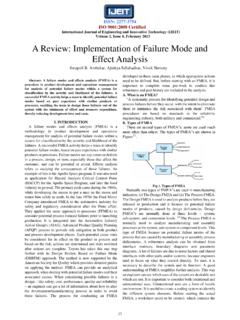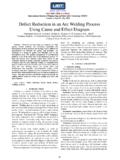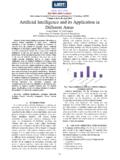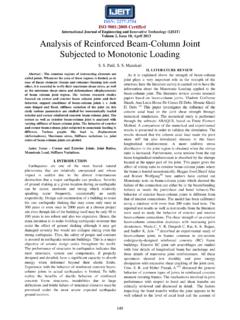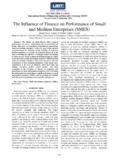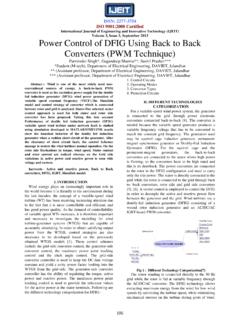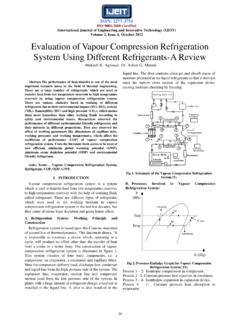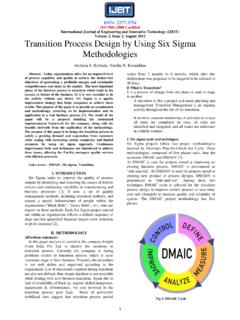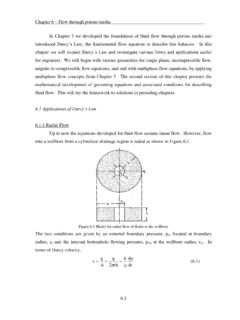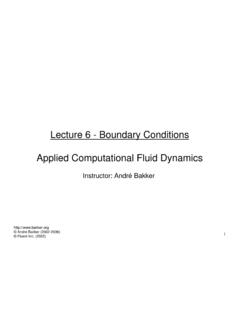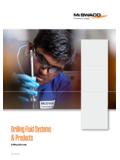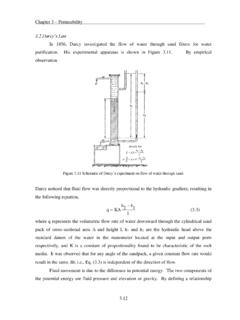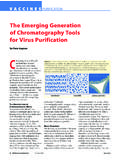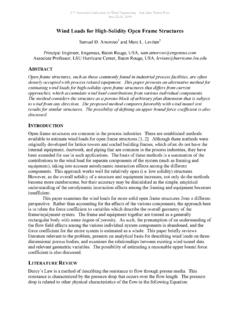Transcription of The Blasius and Sakiadis Flow in a Nanofluid …
1 ISSN: 2277-3754 ISO 9001:2008 Certified International Journal of Engineering and Innovative Technology (IJEIT) Volume 3, Issue 3, September 2013 225 Abstract The porosity effects on the flow and heat transfer characteristics of the Blasius and Sakiadis flow in a Nanofluid in the presence of thermal radiation. The resulting system of nonlinear partial differential equations is solved numerically using an efficient numerical shooting technique with a fourth-order Runge Kutta scheme. The solutions for the flow and heat transfer characteristics are evaluated numerically for various values of the governing parameters, namely the nanoparticle volume fraction and the porosity parameter . Three different types of nanoparticles are considered, namely Cu, Al2O3 and TiO2. The variations of dimensionless surface temperature as well as flow and heat-transfer characteristics with the governing dimensionless parameters of the problem, which include the nanoparticles volume fraction , the thermal radiation parameter NR and the porosity are graphed and tabulated.
2 Results of some earlier workers have been deduced as special cases. Excellent validation of the present numerical results has been achieved with the earlier Blasius and Sakiadis flow problem of Olanrewaju et al. [37] for local Nusselt number without taking the effect of nanoparticles and porosity. Keywords: Nanofluid , porosity, Blasius and Sakiadis , Thermal radiation, convective surface boundary condition. Nomenclature a the convective parameter fC Skin friction coefficient pc Specific heat Ec Eckert number f Dimensionless stream function k Thermal conductivity K Permeability of the porous medium *k Mean absorption coefficient m Surface temperature parameter RN Radiation parameter xNu Nusselt number Pr Prandtl number rq Radiative heat flux T Temperature vu, Velocity components along x- and y-directions, respectively yx, Cartesian coordinates along the plate and normal to it.
3 Respectively Greek symbols Thermal diffusivity Similarity variable Porosity parameter Dimensionless temperature Effective viscosity Kinematic viscosity Density * Stefan Boltzmann constant nfpC Heat capacitance of the Nanofluid fpC Heat capacity of the fluid spC Effective heat capacity of the nanoparticles material Nanoparticles volume fraction Subscripts f Fluid fraction nf Nanofluid fraction s Solid fraction w Condition at the wall Stream function condition at the infinity I. INTRODUCTION Studies related to nanofluids have attracted a great deal of interest in recent time due to their enormous enhanced performance properties, particularly with respect to heat transfer. Nanofluids have novel properties that make them potentially useful in many applications in heat transfer, including microelectronics, fuel cells, pharmaceutical The Blasius and Sakiadis Flow in a Nanofluid through a Porous Medium in the Presence Of Thermal Radiation under a Convective Surface Boundary Condition F.
4 M. Hady1, Mohamed R. Eid*2, Abd-Elsalam3, Mostafa A. Ahmed3 1 Department of Mathematics, Faculty of Science, Assiut University, Assiut 71516, Egypt.) 2 Department of Science and Mathematics, Faculty of Education, Assiut University, The New Valley 72111, Egypt. 3 Department of Mathematics, Faculty of Science, Sohag University, Sohag, Egypt ISSN: 2277-3754 ISO 9001:2008 Certified International Journal of Engineering and Innovative Technology (IJEIT) Volume 3, Issue 3, September 2013 226 processes, and hybrid-powered engines. Nanoparticle is of great scientific interest as it is an effectively bridge between bulk materials and atomic or molecular structures. Investigations of boundary layer flow and heat transfer of viscous fluids over a flat sheet are important in many manufacturing processes, such as polymer extrusion, drawing of copper wires, continuous stretching of plastic films and artificial fibers, hot rolling, wire drawing, glass-fiber, metal extrusion, and metal spinning.
5 For instance, in their experimental study of drug nanoparticles by antisolvent precipitation, Matteucci et al. [1] revealed that an adequate knowledge of nanoparticles volume fraction is beneficial for designing mixing systems and surfactant stabilizers for forming nanoparticles of poorly water soluble drugs with the potential for high dissolution rates. Nanofluids are engineered colloids made of a base fluid and nanoparticles. Nanofluids are solid-liquid composite materials consisting of solid nanoparticles or nanofibers, with sizes typically on the order of 1 100 nm, suspended in a liquid. Since the pioneering experimental work of Choi [2] on nanofluids, numerous models have been proposed by different authors to study convective flows of nanofluids and we mention here the papers in Refs. [3 8]. A comprehensive survey of convective transport in nanofluids was made by Buongiorno [9], who revealed that a satisfactory explanation for the abnormal increase in the thermal conductivity and viscosity was yet to be found.
6 Moreover, the boundary layer flow over a moving surface has attracted considerable attention in recent years due to its crucial role in numerous industrial and engineering applications. Very recently, Kuznetsov and Nield [8] have examined the influence of nanoparticles on natural convection boundary-layer flow past a vertical plate, using a model in which Brownian motion and thermophoresis are accounted for. The authors have assumed the simplest possible boundary conditions, namely those in which both the temperature and the nanoparticles fraction are constant along the wall. Further, Nield and Kuznetsov [10] have studied the Cheng and Minkowycz [11] problem of natural convection past a vertical plate, in a porous medium saturated by a Nanofluid . The analytical and experimental results for the flow and temperature fields in the boundary layer regime were confirmed by Makinde [12] investigated the free-convection flow with thermal radiation and mass transfer past a moving vertical porous plate.
7 Sakiadis [13] initiated the study of the boundary layer flow over a stretched surface moving with a constant velocity and formulated a boundary-layer equation for two-dimensional and axisymmetric flows . Tsou et al. [14] analyzed the effect of heat transfer in the boundary layer on a continuous moving surface with a constant velocity and experimentally confirmed the numerical results of Sakiadis [13]. Erickson et al. [15] extended the work of Sakiadis [13] to include blowing or suction at the stretched sheet surface on a continuous solid surface under constant speed and investigated its effects on the heat and mass transfer in the boundary layer. The related problems of a stretched sheet with a linear velocity and different thermal boundary conditions in Newtonian fluids have been studied, theoretically, numerically and experimentally, by many researchers, such as Crane [16], Fang [17 , 18], Fang and Lee [19].
8 The classical problem ( , fluid flow along a horizontal, stationary surface located in a uniform free stream) was solved for the first time in 1908 by Blasius [20]; it is still a subject of current research [21 , 22] and, moreover, further study regarding this subject can be seen in most recent papers [23 , 24]. A study on boundary layer flow of a Nanofluid past a stretching sheet with a convective boundary condition was conducted by Makinde and Aziz [25]. Recently, Ahmad et al. [26] presented a numerical study on the Blasius and Sakiadis problems in nanofluids under isothermal condition. Their results revealed that the solid volume fraction affects the fluid flow and heat transfer characteristics of nanofluids. Moreover, their theoretical studies of nanofluids relied on the assumption that the combined effects of both the viscous dissipation and Newtonian heating on the flow system are negligible.
9 In reality, this may not be the case, since viscous heating of the base fluid is enhanced by the addition of nanoparticles, and the convective heat transfer may also take place at the heated plate surface. The exclusion of viscous dissipation and Newtonian heating in the analysis may affect the outcome of their investigation. To the best of our knowledge, no attempt has been made in the literature to highlight the combined effects of viscous dissipation and Newtonian heating on the thermal boundary layer of nanofluids. Makinde [27] investigate the combined effects of viscous dissipation and Newtonian heating on the boundary layer flow of water-based nanofluids containing two types of nanoparticles such as copper (Cu) and titanium (TiO2) over a moving surface. The natural convection boundary-layer flow past a vertical cone embedded in a porous medium filled with a non- Newtonian Nanofluid in the presence of heat generation or absorption is presented in Hady et al.
10 [28]. A similarity solution of the steady boundary layer flow near the stagnation-point flow on a permeable stretching sheet in a porous medium saturated with a Nanofluid and in the presence of internal heat generation/absorption is theoretically studied by Hamad and Pop [29]. Convective flow in porous media has been widely studied in the recent years due to its wide applications in engineering as post accidental heat removal in nuclear reactors, solar collectors, drying processes, heat exchangers, geothermal and oil recovery, building construction (Nield and Bejan [30], Ingham and Pop [31], Vafai [32] and Vadasz [33], etc.). It is well known that conventional heat transfer fluids, including oil, water, and ethylene glycol mixture are poor heat transfer fluids, since the thermal conductivity of these fluids plays an important role on the heat transfer coefficient between the heat transfer medium and the heat transfer surface.
